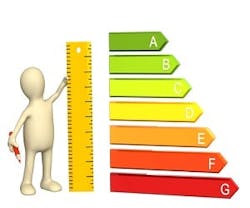What is Energy Use Intensity?
While the importance of building energy performance metrics to reduce energy use is accepted worldwide, there is no single generally accepted definition of that metric. Currently, proposed relative energy use reduction targets are subject to interpretation and difficult to verify.
Under a new initiative, ASHRAE is working to define one clear, logical metric to move the building industry toward producing net zero energy buildings by 2030.
The U.S. Congress has mandated a series of relative fossil fuel energy use reductions in federal buildings ending in a 100 percent reduction of fossil fuel energy by 2030. Congress is considering applying similar relative energy use reductions in all buildings through the use of building energy codes adopted by state and local government.
“We must address buildings as entire living entities,” ASHRAE President Ron Jarnagin says. “As such, we need to establish energy targets for building design that provide a total building energy use goal.”
ASHRAE has developed a public policy brief asking Congress to foster collaboration among the U.S. Department of Energy, the National Institute of Standards and Technology and the U.S. Environmental Protection Agency and ASHRAE along with partner organizations to:
• Establish a single objective definition of energy use intensity (EUI) for the design of commercial buildings
• Determine a single objective baseline EUI for design of commercial buildings from which to measure relative energy use reductions
• Create a performance environment that will support reduction in energy consumption associated with all loads in commercial buildings
• Identify a single objective set of commercial building types and simulation models for establishment of target design EUIs
• Produce one set of design target EUIs for the commercial building sector to guide the development of future energy codes and standards and building energy codes adopted by state and local government
“EUIs are very helpful for setting performance- based designs goals,” Jarnagin says. “The current focus on reduction of energy use in building stock has made the use of EUIs popular by governmental organizations, non-government organizations and building industry groups, including ASHRAE. Our goal is to develop and promote technical tools to assist the commercial building design and construction industry in moving toward higher performing buildings.”
